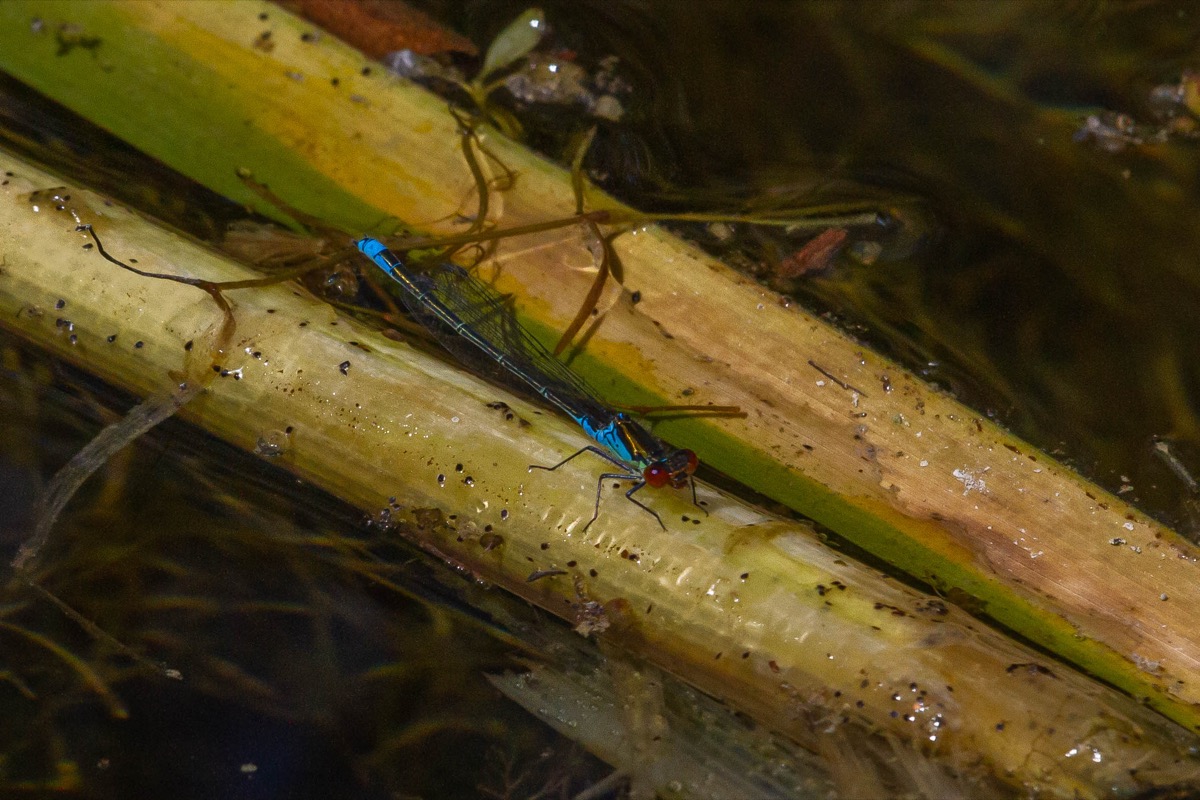Characteristics
- Small to medium size (30 to 40 mm)
- Slender, elongated body, often bright blue in males
- Eyes widely spaced, on the sides of the head
- Wings folded at rest, fully transparent
- Graceful flight, close to aquatic vegetation
Habitat
Coenagrionidae are found in:
- Ponds, lakes, ditches, canals, wetlands
- Stagnant or slow-moving waters, rich in vegetation
- Riparian vegetation, reeds, rushes, damp grasses
- Active from spring to late summer
Biology
- Mating in “heart” position followed by tandem oviposition, often on submerged vegetation
- Discreet oviposition, sometimes in groups
- Aquatic larvae slender, with 3 feathery terminal gills
- Development usually annual, sometimes longer in colder areas
- Mostly active during the day, in full sunlight
Representative Genera
- Coenagrion – Typical blue damselflies, often hard to tell apart (C. puella, C. scitulum, C. pulchellum)
- Ischnura – Common small species, females often show variable coloration (I. elegans, I. pumilio)
- Enallagma, Nehalennia – Other genera locally common or habitat-specific
- Erythromma – More compact bodies, red eyes in some species (E. najas, E. viridulum)
Special Features
- Most widespread family in Europe and worldwide
- Identification can be tricky: requires examining abdominal segments or anal appendages
- Highly active in warm periods, very visible near ponds and lakes
- Excellent bioindicators of aquatic habitat quality
